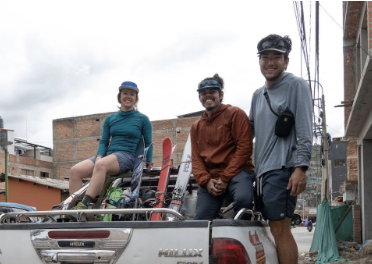Rothberg-Birdwhistell Exploration Fund: Expedition to the Peruvian Andes
In the spring of 2025, we set out on an Alpine and ski mountaineering expedition to Peru’s Cordillera Blanca. As outdoor educators with experience leading students on NOLS courses, our team shares a deep commitment to learning through challenge and a connection to wild places. Our goals: explore new terrain, attempt several high peaks, and grow as leaders and teammates.
We kicked off our trip in Lima, enjoying the local food, culture, and even squeezing in a climbing session at Bloque, a local bouldering gym. Just a day and a half later, we boarded an overnight bus to Huaraz—we arrived groggy but eager to get into the mountains.
Huaraz is a vibrant mountain city nestled in the Andes, a key gateway to the Cordillera Blanca. We arrived during Semana Santa (Holy Week) and soaked in the cultural energy: street vendors, celebrations, and a fun crag day at Los Olivos, a nearby volcanic cliff. There, we gathered beta from local climbers and guiding services. Our first objective: Vallunaraju (18,665 feet/5,689 meters), a classic acclimatization peak in the Cordillera Blanca.
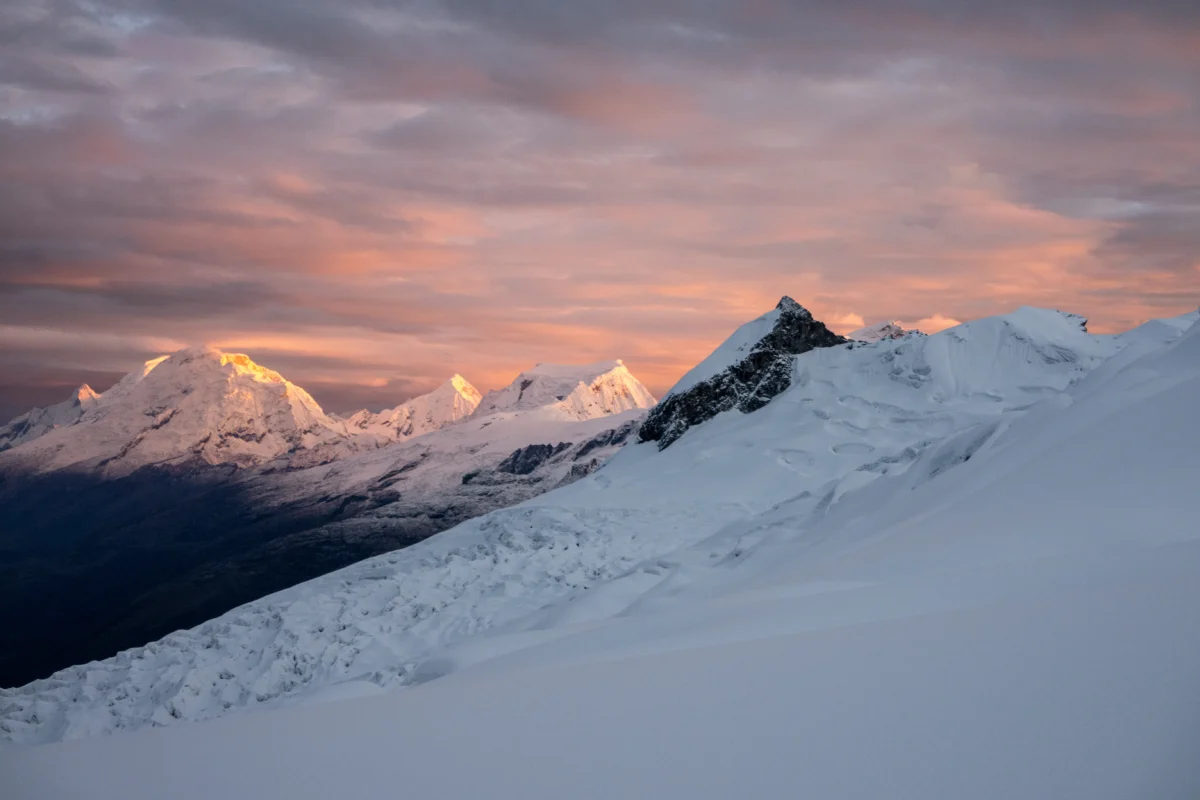
During the early stages of our expedition planning, we predicted encountering early-season conditions: heavy rain and snowfall, unstable snow conditions, and other unforeseen challenges. As anticipated, our first attempt on Vallunaraju was difficult. Wet conditions, route-finding errors in the dark, and freezing temperatures forced us to turn around at around 17,500 feet. Still, we enjoyed some moderate skiing on the descent and leaned into our team’s resilience and adaptability. After resting at Refugio Llaca, we climbed a granite cliff near the refugio, rejuvenating our spirits.
Our second attempt, this time with a lighter setup and without skis, marked a change in style. We camped higher on the moraine as snow fell steadily overnight, and as we tried to sleep, we had to bat the tent walls to keep snow from piling up. High on Vallunaraju, as we approached the col between Vallunaraju Norte and Sur, two descending Peruvian climbers wished us well: “Con suerte,” they said, “with luck.” Their words stuck with us. Summiting the next morning under clear skies was a moment of quiet joy.
The day after we left the valley, Quebrada Llaca, we learned that a dam break had washed out the road and caused flooding in town, a sobering reminder of the fragile Alpine environment.
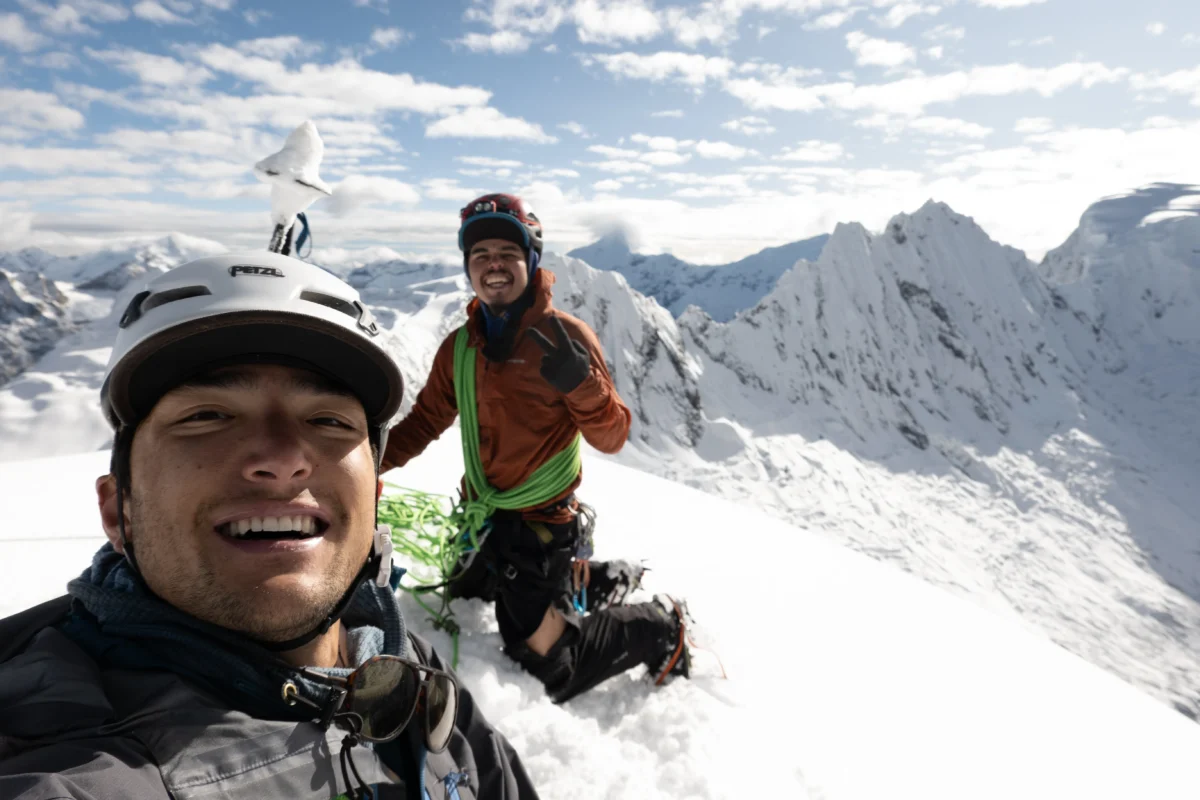
Grace joined the team, and we left our moldy Airbnb behind and headed toward Nevado Pisco (18,871 feet/5,752 meters). After a three-hour drive into Huascarán National Park, we hiked through stunning terrain toward base camp.
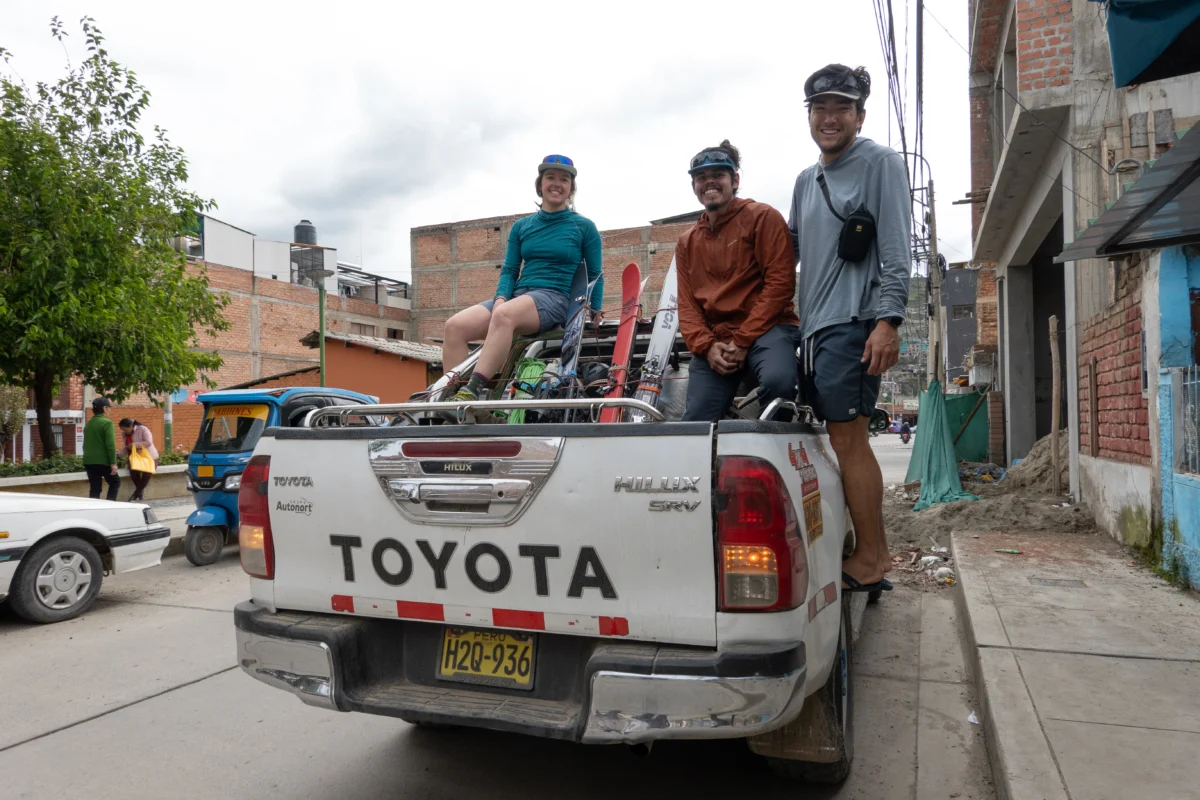
Pisco was shrouded in clouds as we arrived. The next day, we scouted a route through lateral moraines and across boulder fields that guarded a higher moraine camp. What had seemed to be a straightforward morning of boulder-hopping quickly surprised us. First, we had to descend a 60-foot chain-for-a-handline in a steep and crumbling moraine wall. Though this task seemed simple at first, it was largely the crux of decision-making and risk management for our team. It also served as a good reminder to not drop our guard on the approach. After camping higher, we launched a summit attempt on May 31st. We made steady progress to the col but turned back due to altitude sickness and steep, unstable snow. Taking our skis off to move through steeper terrain would have continued to be a slog
We weren’t alone—one other party was on the mountain. A local Peruvian guide confirmed, “Hay mucho nieve,” before retreating with his client. There was still a lot of snow high on the mountain this year.
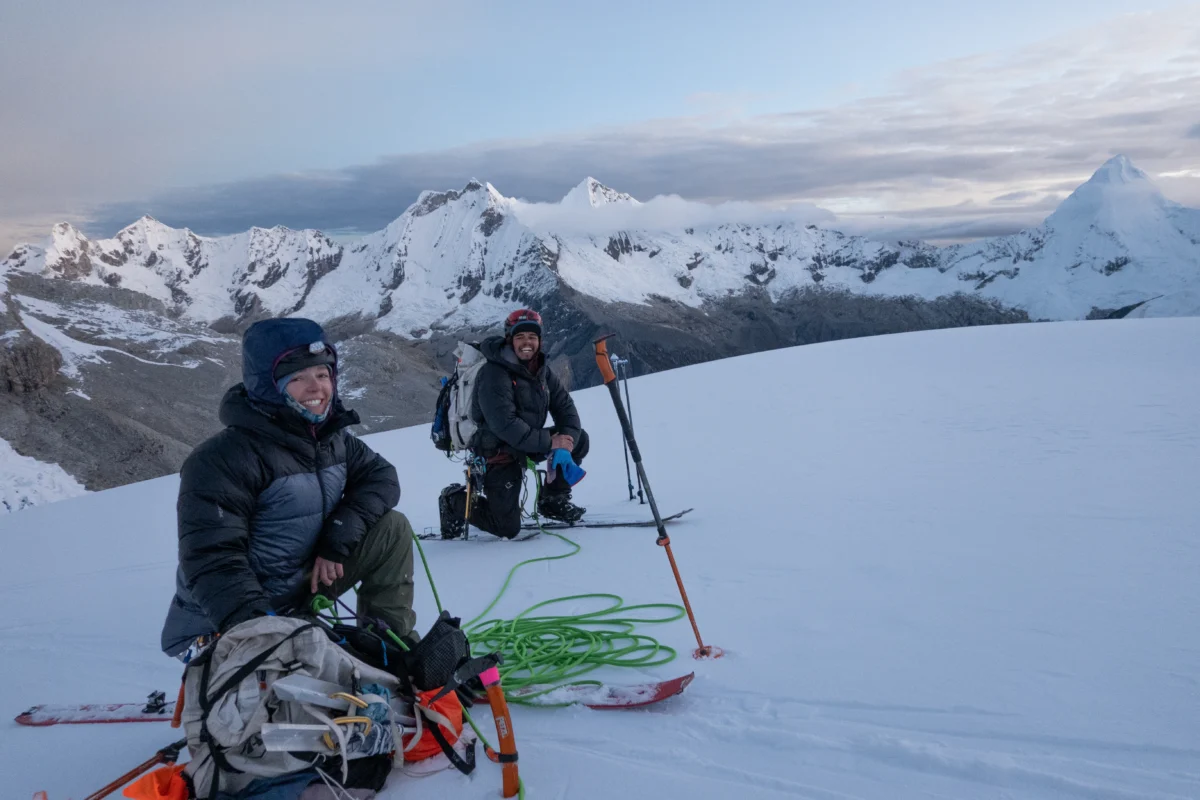
Back in Huaraz, we focused on planning for our final objective, Nevado Copa (20,302 feet/ 6,173 meters). A chance meeting with local guide Aldo led to shared logistics and the use of burros to carry our gear—crucial for the 5,000-foot ascent to base camp.
We hiked from 10,000 feet with light packs and were joined by a friendly dog. The final approach included a steep, melted-out couloir, which we ascended cautiously using fixed lines for safety. Although still early in the mountaineering season, the once snow-filled couloir was now a gully full of loose rock, more evidence of the increasing impacts of climate change.
Our high camp sat atop a granite slab after a roped traverse. That night, we played a final round of Monopoly Deal before settling in for a few hours of sleep.
We started the summit bid at midnight. Early on, we switched from skis to crampons on icy terrain. Navigating away from the ridge due to crevasses, we encountered a steep snow wall, which brought us to a flat bench below the summit ridge. There, a bergschrund blocked the route, and only thin snow bridges spanned the gap. Jerick attempted an overhanging ice step but backed off due to the risk. Disappointment came fast, but we knew turning around was the right call.
Despite not summiting, the ski descent was a highlight. Long, flowing turns on well-covered slopes left us smiling. In the end, we were reminded that success isn’t just about summits—it’s shaped by the lives we return to and the values we carry beyond the climb.
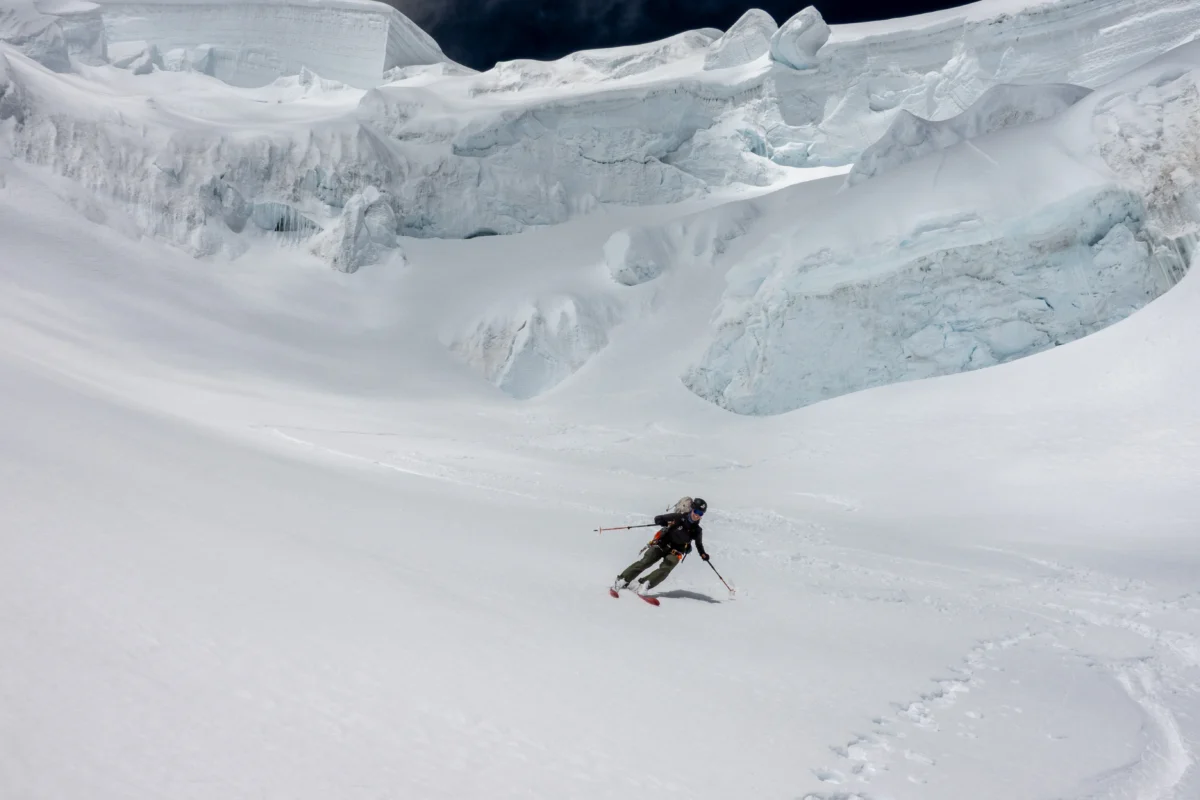
Throughout the expedition, we faced group decision-making, altitude fatigue, illness, and dynamic conditions. Each challenge taught us something about patience, trust, and adaptability.
We returned with sore legs, full hearts, and a deeper bond forged by effort, failure, and shared moments in wild, unforgiving terrain. These mountains left their mark—and gave us new stories, not etched in summits, but in the resilience and reliance on one another.
The Rothberg-Birdwhistell Expedition Fund was established by the Rothberg-Birdwhistell family to support NOLS Instructors as they design and execute personal wilderness expeditions.
Topics:
